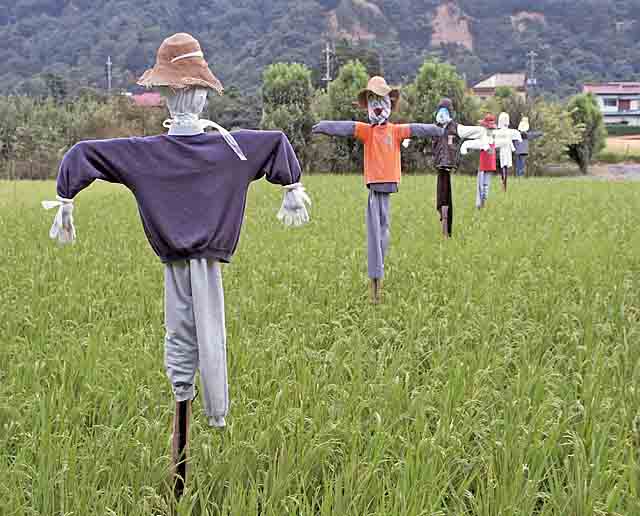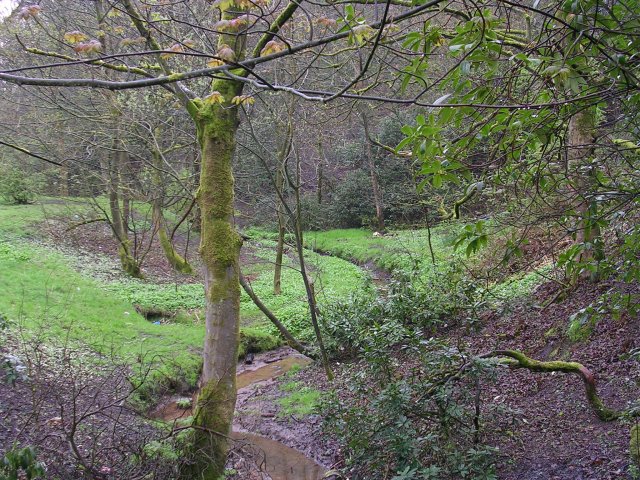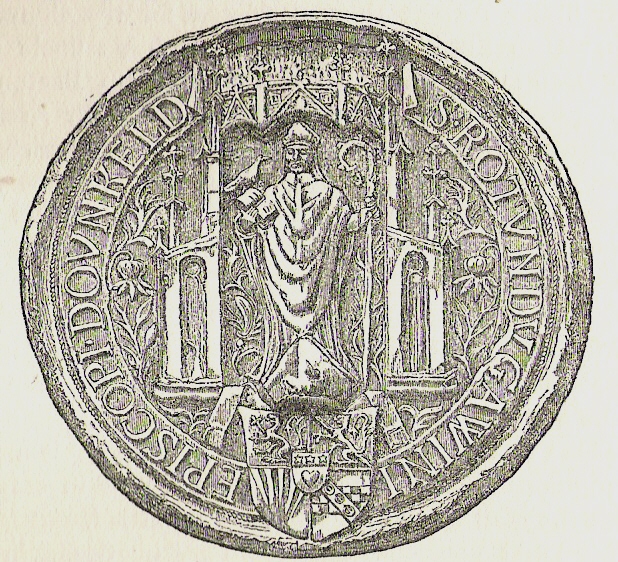|
Bogle
A bogle, boggle, or bogill is a Northumbrian,''Rambles in Northumberland, and on the Scottish border ...'' by William Andrew Chatto, Chapman and Hall, 1835 Cumbrian and Scots term for a ghost or folkloric being,''The local historian's table book, of remarkable occurrences, historical facts, traditions, legendary and descriptive ballads c.connected with the counties of Newcastle-upon-Tyne, Northumberland and Durham.'' by Moses Aaron Richardson, M. A. Richardson, 1843 used for a variety of related folkloric creatures including Shellycoats,''Minstrelsy of the Scottish Border'' by Walter Scott, Sr. Barghests, Brags, the Hedley Kow and even giants such as those associated with Cobb's Causeway (also known as "ettins", "yetuns" or "yotuns" in Northumberland and "Etenes", "Yttins" or "Ytenes" in the South and South West).''Northumberland Words – A Glossary of Words Used in the County of Northumberland and on the Tyneside -, Volume 1'' by Richard Oliver Heslop, Read Books, 2 ... [...More Info...] [...Related Items...] OR: [Wikipedia] [Google] [Baidu] |
Scarecrow
A scarecrow is a decoy or mannequin that is often in the shape of a human. Humanoid scarecrows are usually dressed in old clothes and placed in open fields to discourage birds from disturbing and feeding on recently cast seed and growing crops.Lesley Brown (ed.). (2007). "Shorter Oxford English Dictionary on Historical Principles". 6th ed. Oxford: Oxford University Press. . Scarecrows are used around the world by farmers, and are a notable symbol of farms and the countryside in popular culture. Design The common form of a scarecrow is a humanoid figure dressed in old clothes and placed in open fields to discourage birds such as crows or sparrows from disturbing and feeding on recently cast seed and growing crops. Machinery such as windmills have been employed as scarecrows, but the effectiveness lessens as animals become familiar with the structures. Since the invention of the humanoid scarecrow, more effective methods have been developed. On California farmland, highly-refl ... [...More Info...] [...Related Items...] OR: [Wikipedia] [Google] [Baidu] |
Boggart
A boggart is a supernatural being from English folklore. The dialectologist Elizabeth Mary WElizabeth Wright described the boggart as 'a generic name for an apparition'; folklorist Simon Young defines it as 'any ambivalent or evil solitary supernatural spirit'. Halifax, West Yorkshire, Halifax folklorist Kai Roberts states that boggart ‘might have been used to refer to anything from a hilltop hobgoblin to a household faerie, from a headless apparition to a proto-typical poltergeist’. As these wide definitions suggest boggarts are to be found both in and out of doors, as a household spirit, or a malevolent spirit defined by local geography, a ''genius loci'' inhabiting topographical features. The 1867 book ''Lancashire Folklore'' by John Harland, Harland and Wilkinson, makes a distinction between "House boggarts" and other types. Typical descriptions show boggarts to be Evil, malevolent. It is said that the boggart crawls into people's beds at night and puts a clammy hand on th ... [...More Info...] [...Related Items...] OR: [Wikipedia] [Google] [Baidu] |
Bogeyman
The bogeyman (; also spelled or known as bogyman, bogy, bogey, and, in US English, also boogeyman) is a mythical creature typically used to frighten children into good behavior. Bogeymen have no specific appearances, and conceptions vary drastically by household and culture, but they are most commonly depicted as masculine, androgynous or even feminine monsters that punish children for misbehavior. The bogeyman, and conceptually similar monsters can be found in many cultures around the world. Bogeymen may target a specific act or general misbehavior, depending on the purpose of invoking the figure, often on the basis of a warning from an authority figure to a child. The term is sometimes used as a non-specific personification of, or metonym for, terror – and sometimes the Devil. Etymology The word ''bogeyman'', used to describe a monster in English, may have derived from Middle English ''bugge'' or ''bogge'', which means 'frightening specter', 'terror', or ' scarecrow'. It ... [...More Info...] [...Related Items...] OR: [Wikipedia] [Google] [Baidu] |
Jötunn
A (also jotun; plural ; in the normalised scholarly spelling of Old Norse, ; or, in Old English, , plural ) is a type of being in Germanic mythology. In Norse mythology, are often contrasted with gods (the Æsir and Vanir) and with other non-human figures, such as dwarf (mythology), dwarfs and elf, elves, although the groupings are not always mutually exclusive. The entities included in the category are referred to by several other terms, including , (or ) and if male and or if female. The typically dwell across boundaries from the gods and humans in lands such as . The are frequently attested throughout the Old Norse records, with also featuring in the Old English epic poem ''Beowulf''. The usage of the terms is dynamic, with an overall trend that the beings become portrayed as less impressive and more negative as Christianity becomes more influential over time. Although the term "giant" is sometimes used to gloss the word "" and its apparent synonyms in some transl ... [...More Info...] [...Related Items...] OR: [Wikipedia] [Google] [Baidu] |
Scottish Lowlands
The Lowlands ( or , ; , ) is a cultural and historical region of Scotland. The region is characterised by its relatively flat or gently rolling terrain as opposed to the mountainous landscapes of the Scottish Highlands. This area includes cities like Edinburgh and Glasgow and is known for its fertile farmland, historic sites, and urban centres. It is the more populous and industrialised part of Scotland compared to the sparsely populated Highlands. Culturally, the Lowlands and the Scottish Highlands, Highlands diverged from the Late Middle Ages into the modern period, when Scots language, Lowland Scots replaced Scottish Gaelic throughout most of the Lowlands. Geography Geographically, Scotland is divided into three distinct areas: the Scottish Highlands, Highlands, the Central plain (Central Belt, in the Central Lowlands), and the Southern Uplands. The Lowlands cover roughly the latter two. The northeast plain is also "low-land", both geographically and culturally, but in ... [...More Info...] [...Related Items...] OR: [Wikipedia] [Google] [Baidu] |
Brownie (elf)
A brownie or broonie (Scots language, Scots), also known as a or (Scottish Gaelic), is a household deity, household spirit or hobgoblin from Scottish folklore that is said to come out at night while the owners of the house are asleep and perform various chores and farming tasks. The human owners of the house must leave a bowl of milk or cream or some other sacrifice, offering for the brownie, usually by the hearth. Brownies are described as easily offended and will leave their homes forever if they feel they have been insulted or in any way taken advantage of. Brownies are characteristically mischievous and are often said to punish or pull pranks on lazy servants. If angered, they are sometimes said to turn malicious, like boggarts. Brownies originated as domestic Tutelary deity, tutelary spirits, very similar to the Lares of ancient Roman tradition. Descriptions of brownies vary regionally, but they are usually described as ugly, brown-skinned, and covered in hair. In the ol ... [...More Info...] [...Related Items...] OR: [Wikipedia] [Google] [Baidu] |
Tam O' Shanter (poem)
"Tam o' Shanter" is a narrative poem written by the Scotland, Scottish poet Robert Burns in 1790, while living in Dumfries. First published in 1791, at 228 (or 224) lines it is one of Burns' longer poems, and employs a mixture of Scots language, Scots and English language, English. The poem describes the habits of Tam (a Scots nickname for Thomas (name), Thomas), a farmer who often gets drunk with his friends in a public house in the Scottish town of Ayr, and his thoughtless ways, specifically towards his wife, who waits at home for him. At the conclusion of one such late-night revel, after a market day, Tam rides home on his horse Meg while a storm is brewing. On the way he sees the local haunted church lit up, with Witches' sabbath, witches and warlocks dancing and the Devil playing the bagpipes. He is still drunk, still upon his horse, just on the edge of the light, watching, amazed to see the place bedecked with many gruesome things such as Gibbeting, gibbet irons and kni ... [...More Info...] [...Related Items...] OR: [Wikipedia] [Google] [Baidu] |
Robert Burns
Robert Burns (25 January 1759 – 21 July 1796), also known familiarly as Rabbie Burns, was a Scottish poet and lyricist. He is widely regarded as the List of national poets, national poet of Scotland and is celebrated worldwide. He is the best known of the poets who have written in the Scots language, although much of his writing is in a "light Central Scots, Scots dialect" of English, accessible to an audience beyond Scotland. He also wrote in standard English, and in these writings his political or civil commentary is often at its bluntest. He is regarded as a pioneer of the Romanticism, Romantic movement, and after his death he became a great source of inspiration to the founders of both liberalism and socialism, and a cultural icon in Scotland and among the Scottish diaspora around the world. Celebration of his life and work became almost a national charismatic cult during the 19th and 20th centuries, and his influence has long been strong on Scottish literature. In 2009 ... [...More Info...] [...Related Items...] OR: [Wikipedia] [Google] [Baidu] |
Gavin Douglas
Gavin Douglas (c. 1474 – September 1522) was a Scottish bishop, makar and translator. Although he had an important political career, he is chiefly remembered for his poetry. His main pioneering achievement was the '' Eneados'', a full and faithful vernacular translation of the ''Aeneid'' of Virgil into Scots, and the first successful example of its kind in any Anglic language. Other extant poetry of his includes ''Palice of Honour'', and possibly ''King Hart''. Life and career Early life Gavin (or Gawin, Gawane, Gawain) Douglas was born c. 1474–76, at Tantallon Castle, East Lothian, the third son of Archibald, 5th Earl of Angus by his second wife Elizabeth Boyd. A Vatican register records that Gavin Douglas was 13 in 1489, suggesting he was born in 1476. An application had been lodged to award Gavin the right to hold a Church canonry or prebend and enjoy its income. Another appeal to Rome concerning church appointments made in February 1495 states his age as 20. He was ... [...More Info...] [...Related Items...] OR: [Wikipedia] [Google] [Baidu] |
Old Norse
Old Norse, also referred to as Old Nordic or Old Scandinavian, was a stage of development of North Germanic languages, North Germanic dialects before their final divergence into separate Nordic languages. Old Norse was spoken by inhabitants of Scandinavia and their Viking expansion, overseas settlements and chronologically coincides with the Viking Age, the Christianization of Scandinavia, and the consolidation of Scandinavian kingdoms from about the 8th to the 15th centuries. The Proto-Norse language developed into Old Norse by the 8th century, and Old Norse began to develop into the modern North Germanic languages in the mid- to late 14th century, ending the language phase known as Old Norse. These dates, however, are not precise, since written Old Norse is found well into the 15th century. Old Norse was divided into three dialects: Old West Norse (Old West Nordic, often referred to as ''Old Norse''), Old East Norse (Old East Nordic), and Old Gutnish. Old West Norse and O ... [...More Info...] [...Related Items...] OR: [Wikipedia] [Google] [Baidu] |
Proto-Indo-European
Proto-Indo-European (PIE) is the reconstructed common ancestor of the Indo-European language family. No direct record of Proto-Indo-European exists; its proposed features have been derived by linguistic reconstruction from documented Indo-European languages. Far more work has gone into reconstructing PIE than any other proto-language, and it is the best understood of all proto-languages of its age. The majority of linguistic work during the 19th century was devoted to the reconstruction of PIE and its daughter languages, and many of the modern techniques of linguistic reconstruction (such as the comparative method) were developed as a result. PIE is hypothesized to have been spoken as a single language from approximately 4500 BCE to 2500 BCE during the Late Neolithic to Early Bronze Age, though estimates vary by more than a thousand years. According to the prevailing Kurgan hypothesis, the proto-Indo-European homeland, original homeland of the Proto-Indo-Europeans may ... [...More Info...] [...Related Items...] OR: [Wikipedia] [Google] [Baidu] |








